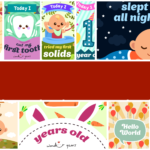
Children love to play.
Play brings together children of diverse backgrounds, teaching them how to engage and interact with the world.
Play is an essential component of a child’s life. It is not a want, but a need. The importance of play for preschoolers is so huge, that it has even been declared by the United Nations as a child’s right.
The Importance of Play for Preschoolers
The importance of play for preschoolers cannot be undermined. Playing aids in the healthy development of young children. The activities during playtime let them learn language, communication, how the world works, how to solve problems, make decisions and improve their motor skills.
Moreover, when children have fun playing, their bodies release endorphins that regulate their mood and relieve stress.
Types of Play for Children
There are numerous types of play for children, all distinct in their own way. The following 16 play types engage seven areas of learning – Communication and Language, Personal, Social and Emotional Development, Physical Development, Literacy, Understanding the World, Expressive Arts and Design, and Mathematics.
1. Communication Play
Communication play involves written, verbal or body language interaction between children, adults or animals. You can sing songs, dance, write notes to your child or simply engage in everyday conversation.
2. Creative Play
Children engaging in creative play produce ideas or products in an artistic manner using their imagination and materials that are easily accessible to them.
Apart from art and craft, you can offer loose parts to your child. Some examples of loose parts include bottle caps, wine corks, buttons, sticks, boxes and pebbles.
3. Deep Play
Deep play allows children to assess their own risks and create new boundaries. Also, it helps them to overcome fears and builds up self-confidence when they are successful.
Examples of deep play activities include climbing trees, balancing on tree trunks or tinkering with tools like hammers and nails.
4. Dramatic Play
In dramatic play, children act out roles that are assigned to them. You can set up dramatic play areas and props for your child to act out roles at home.
Read also: 4 Sensory Play Activities for Toddlers and Preschoolers
5. Exploratory Play
This type of play for children originates from their natural sense of curiosity about the world.
Children enjoy finding out how things work and seek to solve and understand their environment.
Examples include using toys and objects in different ways, playing with puzzles and games with their own made-up rules.
6. Fantasy Play
In fantasy play, or pretend play, children act as something unrealistic. Some examples of fantasy play include children pretending to be invisible or having superpowers.
You can bring your child outdoors where they can use various natural materials to aid in recreating their fantasies.
7. Imaginary Play
Fantasy play and imaginary play are similar in that children act out what is in their minds.
However, imaginary play is based on the experiences they have had or something interesting to them. This includes imagining themselves as a dog, or pirate.
8. Locomotor Play
Locomotor play is anything to do with movement. Playing ball games, stretching or even running around is part of locomotor play.
You can enhance your child’s locomotor play opportunities by providing them with a wide space to explore.
9. Mastery Play
A play that leads to the acquirement of new skills, mastery play happens when a child is trying to learn a skill.
Often, children repeat the same action over and over again until they get it right. Digging holes, making sandcastles or riding bicycles are all examples of mastery play.
10. Object Play
Object play is the active and playful manipulation of objects, such as throwing a ball, building blocks, or using loose parts to create their own imaginative scenes. This type of play allows children to understand how objects can be used as tools.
11. Recapitulative Play
Recapitulative play explores ancestry, history, rituals, stories, rhymes, fire and darkness. Children get to access play related to early human evolutionary stages.
Some examples of recapitulative play include building a campfire outdoors and castle play.
12. Role Play
An excellent way to pick up life skills, role play is a type of play that comes naturally to children and is often spontaneous. It could be a child pretending to drive a car or pretending to be an astronaut or pilot.
13. Rough and Tumble Play
Much similar to how puppies play-wrestle, rough and tumble play is a type of close encounter play with another person.
There is no intentional hurting and children should be laughing and having fun. Some forms of rough and tumble play include pillow fighting, tug-of-war or even tumbling on a mat.
14. Social Play
Social play allows children to explore social interactions and engage with other children.
Any activity that involves another person is social play. It could be playing a game together, taking turns on the slide or creating artwork together.
15. Socio-Dramatic Play
In socio-dramatic play, children recreate experiences or scenarios that they have seen or experienced. They adopt roles to mimic a real-life situation. Some examples include playing house, classroom or market.
16. Symbolic Play
Symbolic play is the ability to use objects, actions and ideas to represent other objects, actions and ideas. Examples of symbolic play include using a stick as a sword or magic wand, a banana as a phone, or pebbles as play food.
Read also: Types of Risky Play Your Child Needs
If the 16 types of play for children seem overwhelming, you may be heartened to realise that one activity usually encompasses elements from various types of play. The best way to enhance your child’s development is to spend undivided time with them to foster emotional connections.























